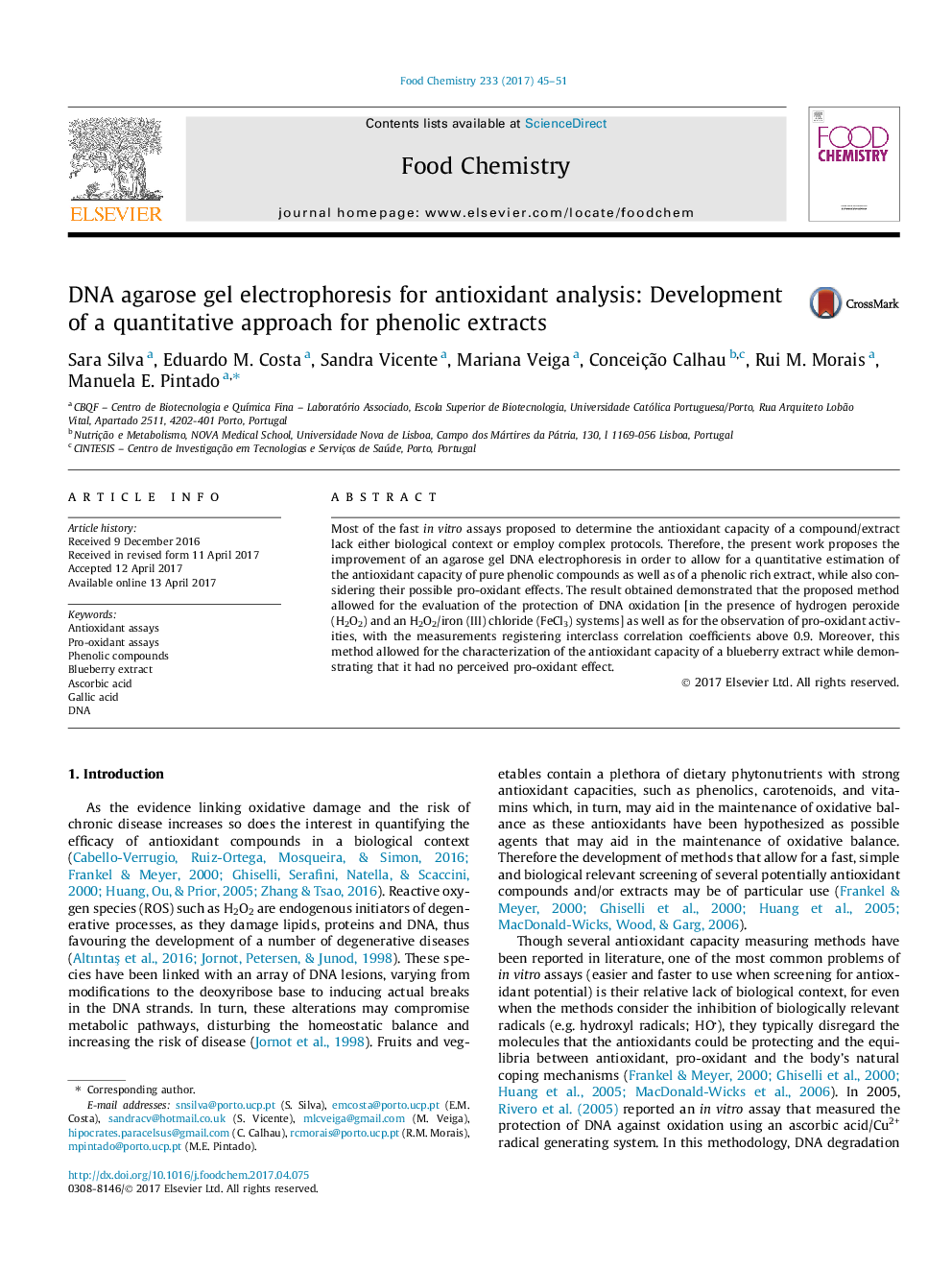| Article ID | Journal | Published Year | Pages | File Type |
|---|---|---|---|---|
| 5132800 | Food Chemistry | 2017 | 7 Pages |
â¢Both H2O2 and H2O2/FeCl3 are effective DNA degradation systems.â¢Ascorbic acid had both antioxidant and prooxidant effects.â¢Gallic acid prevented DNA oxidation and had no prooxidant effect.â¢The extract effectively prevented DNA oxidation and had no prooxidant effect.
Most of the fast in vitro assays proposed to determine the antioxidant capacity of a compound/extract lack either biological context or employ complex protocols. Therefore, the present work proposes the improvement of an agarose gel DNA electrophoresis in order to allow for a quantitative estimation of the antioxidant capacity of pure phenolic compounds as well as of a phenolic rich extract, while also considering their possible pro-oxidant effects. The result obtained demonstrated that the proposed method allowed for the evaluation of the protection of DNA oxidation [in the presence of hydrogen peroxide (H2O2) and an H2O2/iron (III) chloride (FeCl3) systems] as well as for the observation of pro-oxidant activities, with the measurements registering interclass correlation coefficients above 0.9. Moreover, this method allowed for the characterization of the antioxidant capacity of a blueberry extract while demonstrating that it had no perceived pro-oxidant effect.
